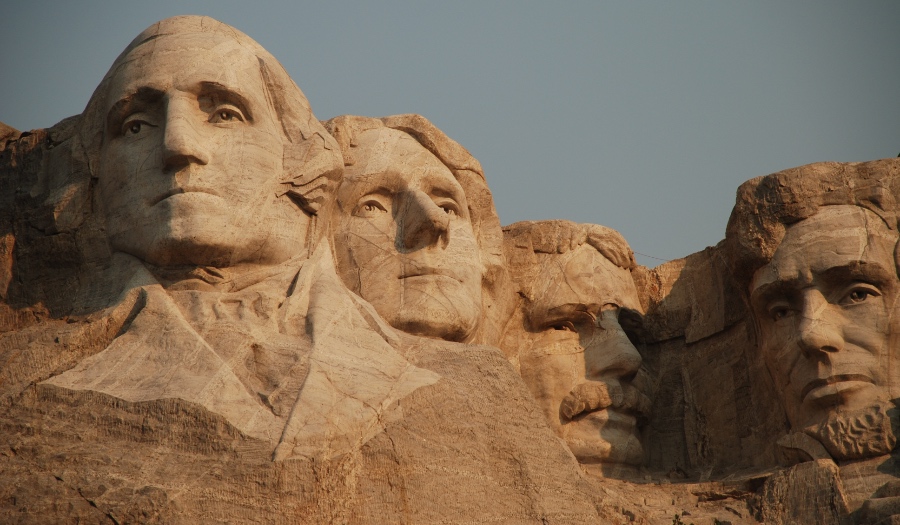So you’re looking for the difference between a Democrat and a Republican? You’ve come to the right place! In this article, I will discuss the differences between the two political parties in great detail.
1: The History Of The Parties
The concept of political parties has been around since the beginning of the American Republic. The first two major political groups to emerge in the United States were the Federalists and the Democratic-Republicans. The Federalists, led by Alexander Hamilton, believed in a strong central government and a nationalist economic policy. In contrast, the Democratic-Republicans, led by Thomas Jefferson, advocated for decentralized government and agrarian economic policies.
During the 1800s, the Whig Party was formed and was largely opposed to Andrew Jackson’s Democratic Party, who held power in the House of Representatives during this time. In 1860, the Republican Party was founded, which supported a stronger federal government and favored free labor over slave labor. Eventually in the late 19th century, the Populist Party emerged advocating for more power for farmers and laborers. In the 20th century, two new major parties emerged: The Progressive Party and the Bull Moose Party.
Both of these parties were short-lived but had an impact on politics during this time. In the present day, there are two dominant parties in American politics: The Republican Party and the Democratic Party.
Today, both parties advocate for their individual views on issues such as taxation, healthcare, education and many other policies. The history of American political parties has seen many different groups come and go over time, but today’s two major parties have remained largely unchanged since their inception.
2: The Principles Of Each Party
When it comes to politics, there are two main parties: Republicans and Democrats. Each party has its own set of core values and beliefs that drive their decision making and actions. For Republicans, their key principles include limited government, personal responsibility, and fiscal responsibility. They support smaller government intervention in the economy, lower taxes, and fewer regulations.
Democrats, on the other hand, have a focus on social justice and equity. They prioritize a strong social safety net, environmental protection, and civil rights. Ultimately, the principles of each party determine what laws they support or oppose while in office. It is important to understand the principles of both parties so you can be an informed voter and make informed decisions when casting your ballot. Knowing the core values and beliefs of each party will help you make an educated decision on which party aligns with your views.
3: The Beliefs And Values Of The Parties
Political parties are composed of people with shared beliefs and values, which often center around a particular issue or set of issues. Whether it be social, economic or environmental, parties have the ability to express their views and ideals through the democratic process. Understanding the beliefs and values of parties is essential to understanding the impact they can have on politics.
Every party has a platform that outlines their core beliefs and values, which can often be seen in the policies that they pursue. For example, a party that values environmental conservation may prioritize legislation surrounding climate change, while a party that values economic growth may prioritize policies that support businesses and job creation. Knowing the underlying values and beliefs of a party can help inform how they may act in office and what policies they may pursue.
It is important to note that these values and beliefs are not static, but can change over time based on shifts in public opinion or new evidence that comes to light. By understanding the beliefs and values of the parties, we can better understand their decisions and their impact on our lives.

4: The Policies Of Each Party
When it comes to politics, the policies of each party can have a huge impact on how government functions. Understanding the different policies is key to understanding the ideologies of each political party. Republicans generally focus on fiscal responsibility, small government, and traditional values. They believe in a limited government, with lower taxes and fewer regulations.
Democrats, on the other hand, prioritize social welfare programs and progressive change. They are more likely to support higher taxes and increased government spending, while also advocating for civil rights and social justice. Furthermore, both parties have a responsibility to ensure the health and safety of the American people through defense and national security policies.
It is important for citizens to educate themselves on the policies of each party before casting their ballots in any election. By understanding the different policies, individuals can make informed decisions about which candidate to support and how their vote will ultimately shape our country’s future.
5: The Leaders And Figures Of Each Party
The political landscape in the United States is dominated by two major parties – the Democratic and Republican parties. Both of these parties have key leaders and influential figures that help to shape their party’s platform and direction. For the Democratic Party, former President Barack Obama is seen as a leader of the party, and current President Joe Biden is an influential figure.
On the Republican side, former President Donald Trump is seen as a leader of the party, and current Senate Minority Leader Mitch McConnell is a major figure. Each of these leaders and figures have their own opinions and stances on certain topics, helping to shape their respective party’s platform and agenda.
From Obama’s support for healthcare reform to Trump’s hardline stance on immigration, these leaders and figures have had a major impact on their respective party’s agendas. It is important to understand the leaders and figures of each party in order to gain a better understanding of the political landscape in the United States.
6: How To Join The Political Party
Joining a political party can be an incredibly rewarding experience, and a great way to get involved in the political process. Whether you’re interested in advancing your own political agenda or just want to support a party’s platform, joining a political party is an important step. Here’s how to get started:
First, research the different political parties available in your area. Consider their stances on key issues and whether they align with your values. Next, contact the party office to inquire about membership procedures. Depending on the type of party, you may need to fill out an application, meet certain requirements, or pay a fee. Once you’ve met all the necessary criteria, you’ll be officially considered a member of the political party.
From there, you can get involved in activities such as attending meetings and rallies, participating in campaigns and fundraising efforts, or even running for office. Joining a political party is a great way to make your voice heard and have an impact on the political system.

7: Resources For Democrats Or Republicans
Are you a Democrat or Republican? If so, you may be looking for resources to help you stay up to date with the latest news and information regarding your party. Whether you’re looking for voting information or just trying to understand the nuances of party politics, there are a variety of resources available to Democrats and Republicans alike.
Here are some of the best resources for Democrats and Republicans to stay informed. For Democrats, the DNC website is a great source of information on policy, news, and events related to the Democratic Party. The DNC also offers an array of tools and tips to help you get involved with party activities. For Republicans, the RNC website is an excellent source of information on the Republican Party, including news updates and events related to the GOP. Both websites offer a wide range of resources for those who want to learn about and participate in their respective party’s activities.
Additionally, both parties have active Twitter accounts that provide updates on party news and events. For those who want to stay up-to-date with their party’s news, both Twitter accounts are great sources of information. Finally, both parties offer newsletters that provide weekly updates about their respective activities. This is a great way to stay in-the-know about what’s happening in your party and where you can get involved. Whether you’re a Democrat or Republican, there are plenty of resources available to help you stay informed and engaged with your party.
Conclusion
So there you have it – the difference between a Democrat and a Republican. As you can see, they are both different, but they share many of the same values and beliefs. If you want to join one of these great political parties, I recommend that you contact your local Democrat or Republican office.




















